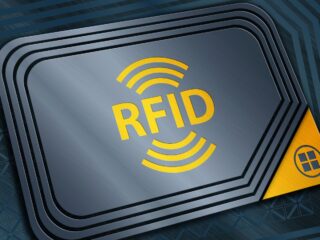The world of real estate has traditionally been rooted in physical assets, with land and properties serving as tangible investments. However, the rise of digital technology has paved the way for new opportunities in the realm of digital real estate. As we move further into the 21st century, the concept of digital real estate is evolving rapidly, and a key driving force behind this evolution is the rise of decentralized digital assets. These assets are transforming the way we perceive ownership, value, and investment in virtual spaces.
The Emergence of Digital Real Estate
Digital real estate refers to the ownership and management of virtual spaces, often within digital worlds or platforms. Unlike traditional real estate, where land and property are bought, sold, and leased in physical locations, digital real estate exists entirely online. These virtual properties can include everything from websites and domain names to parcels of land in online games or virtual environments. Go to Immediate Luminary and make an account there.
Virtual Worlds and Online Communities
One of the most prominent examples of digital real estate is the ownership of land within virtual worlds. Platforms like Decentraland and The Sandbox have created entire virtual environments where users can purchase, develop, and monetize parcels of virtual land. These platforms operate on decentralized networks, allowing users to have true ownership of their digital assets. As more people spend time in these virtual spaces, the demand for digital real estate within them is growing rapidly.
The Value of Virtual Land
The value of digital real estate is determined by a combination of factors, including location within the virtual environment, potential for development, and the level of demand from other users. Just like in the physical world, prime locations in virtual spaces—such as land near popular landmarks or in high-traffic areas—tend to be more valuable.
Additionally, virtual land can be developed and customized, allowing owners to create unique experiences, such as virtual shops, art galleries, or event spaces.
The Role of Decentralized Digital Assets in Digital Real Estate
The rise of decentralized digital assets has significantly impacted the digital real estate market. These assets, often represented as tokens on blockchain networks, provide a secure and transparent way to verify ownership and transfer property rights in virtual spaces.
Ownership and Security
One of the primary benefits of decentralized digital assets in digital real estate is the enhanced security they offer. Traditional online platforms often require users to trust a central authority to manage and secure their virtual assets. In contrast, decentralized networks use blockchain technology to ensure that ownership records are immutable and transparent. This means that once you own a piece of digital real estate, your ownership is secure and cannot be altered by any central entity.
The Future of Digital Real Estate
As digital technology continues to advance, the future of digital real estate looks promising. Several trends are emerging that could shape the way we interact with and invest in virtual spaces.
Integration with Virtual Reality (VR)
Virtual reality is set to play a significant role in the future of digital real estate. As VR technology becomes more sophisticated and accessible, the experience of owning and interacting with virtual spaces will become more immersive. Imagine being able to walk through your virtual property, customize it in real-time, and host virtual events, all from the comfort of your home. This level of interactivity could drive further demand for digital real estate and open up new possibilities for virtual commerce and entertainment.
Expansion of the Metaverse
The concept of the metaverse—a collective virtual shared space—is gaining traction as more companies and platforms invest in its development. The metaverse represents a convergence of physical and digital realities, where users can interact, work, and play in interconnected virtual environments.

Digital real estate will be a crucial component of the metaverse, as users will need virtual spaces to live, work, and socialize within these digital worlds. As the metaverse expands, the demand for digital real estate is likely to grow, potentially leading to new economic models and business opportunities.
Environmental Considerations
As the digital real estate market grows, it’s essential to consider the environmental impact of these virtual spaces. The energy consumption associated with maintaining decentralized networks and virtual environments can be significant. As a result, there is increasing interest in developing more sustainable practices and technologies to reduce the carbon footprint of digital real estate. Innovations in this area could help ensure that the growth of virtual spaces aligns with broader environmental goals.
Conclusion
Digital real estate represents a new frontier in the world of investment and ownership. As decentralized digital assets continue to gain traction, they are transforming the way we interact with virtual spaces, offering new opportunities for secure ownership, investment, and development. The future of digital real estate is intertwined with advancements in technology, the expansion of the metaverse, and the ongoing evolution of regulatory frameworks. As we move forward, the possibilities for digital real estate are vast, and those who embrace this emerging market stand to benefit from the exciting opportunities it presents.







